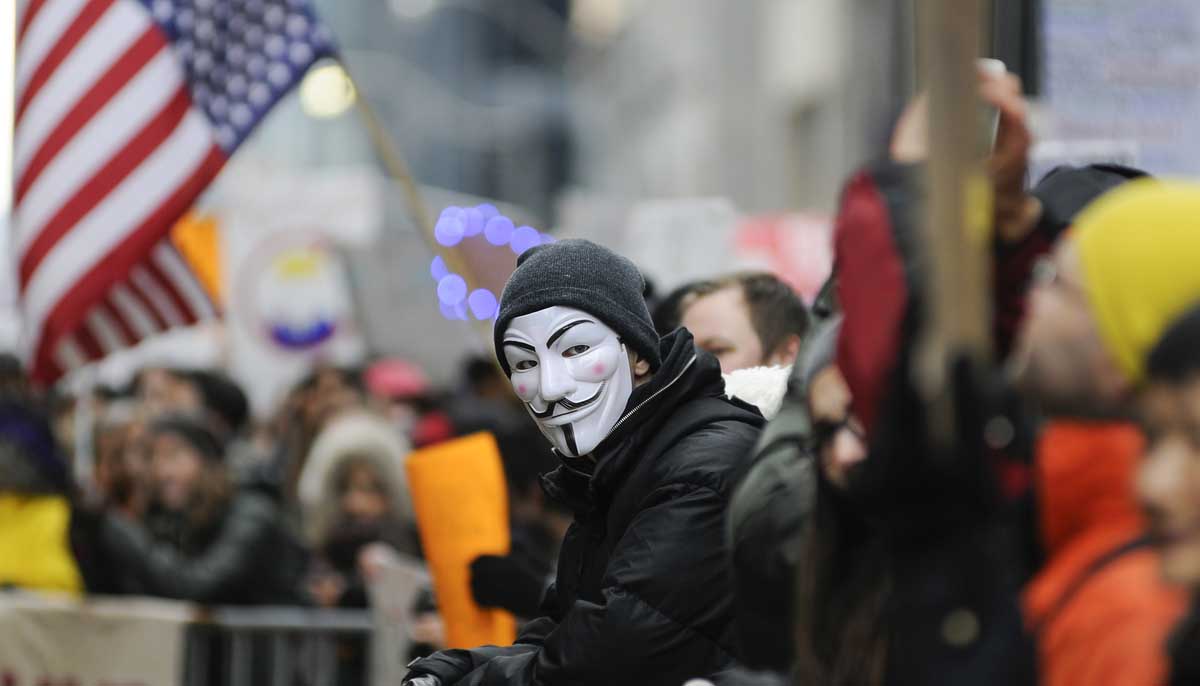Shutterstock
Following the death of George Floyd at the hands of the Minneapolis police department, the US has been gripped by protests against police brutality. The widespread civil unrest has caused a shift in the national tone. A country that was beginning to reemerge from lockdown after months has now shifted to an ongoing debate over police activity.

This shift has also brought back an anonymous hacker collective, aptly known only as “Anonymous”. The group, which has no central leadership and no official members, is known for being “hacktivist” in nature. Their main signifier is the Guy Fawkes mask, which references a comic book character who fights fascism. In the aftermath of Floyd’s death, Anonymous has resumed their hacking activity after years of silence.
Anonymous is a hacker collective with no official hierarchy. As their name suggests, none of their members would ever publicly identify themselves as being part of the collective. Their typical behavior involves exposing corruption or opposing those they see as amoral. Typically, this takes the form of various cyberattacks.
These can include Distributed Denial of Service, or DDoS attacks, where a server is overloaded by a large number of automated requests. In essence, a DDoS is a blunt instrument that can temporarily collapse a site by giving it artificial traffic. Any cloud services network could be targeted by such an attack. The group has also used “doxing,” which involves the release of personal identification of people deemed amoral or in the wrong.
Since the group, by its nature, is decentralized, it is difficult to attribute specific actions to its members. Similarly, anyone can claim to be a member, and thus nearly any hacking activity could be attributed to the collective. However, as their motto “We Are Legion” suggests, this is purposeful.
In an attack thought to be part of Anonymous’ new wave of activity, the Minneapolis police site was targeted by a DDoS. This brought the site down, while hackers used an exploit to acquire email addresses and passwords associated with the police department. However, these emails and passwords could have been from an earlier leak, unrelated to Floyd.
Other activity that may be attributed to the collective includes the hacking of a minor United Nations affiliate’s site. The site now shows an image of Floyd’s face with the message “rest in power, George Floyd”. An emblem often connected to Anonymous is seen at the top of the hacked page.
In other instances, posts of Twitter seem to show anonymous users hacking into police radio bandwidths. One such viral tweet shows a protester blaring loud hip hop music over the police radio whenever dispatch attempts to coordinate police efforts. It is unclear whether or not this video is a hoax.